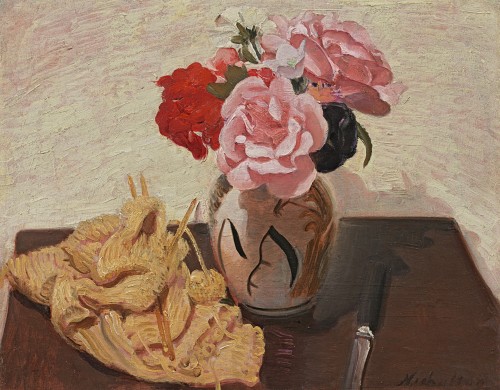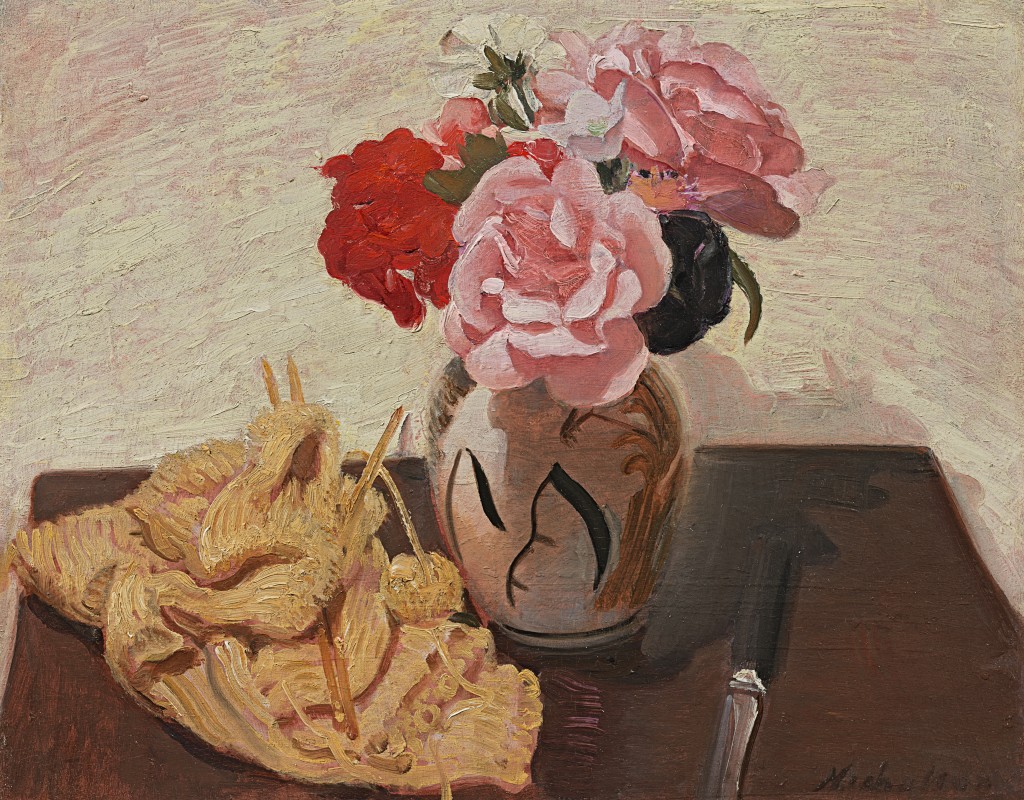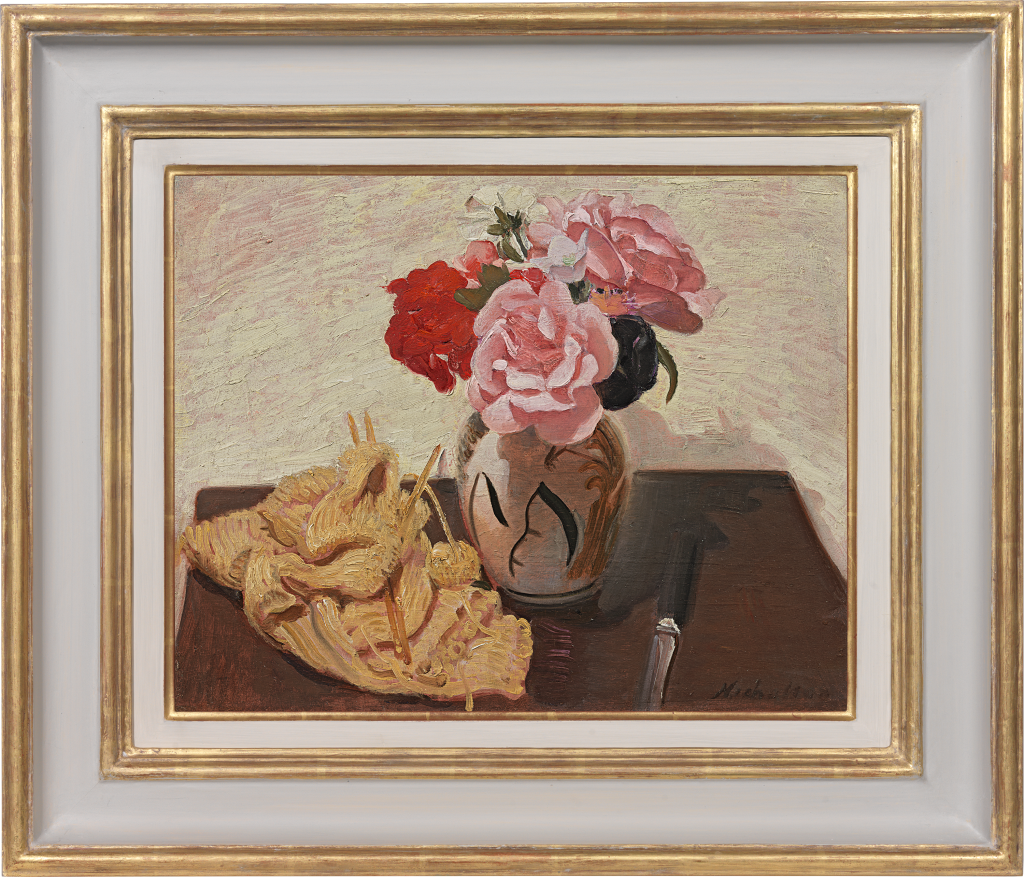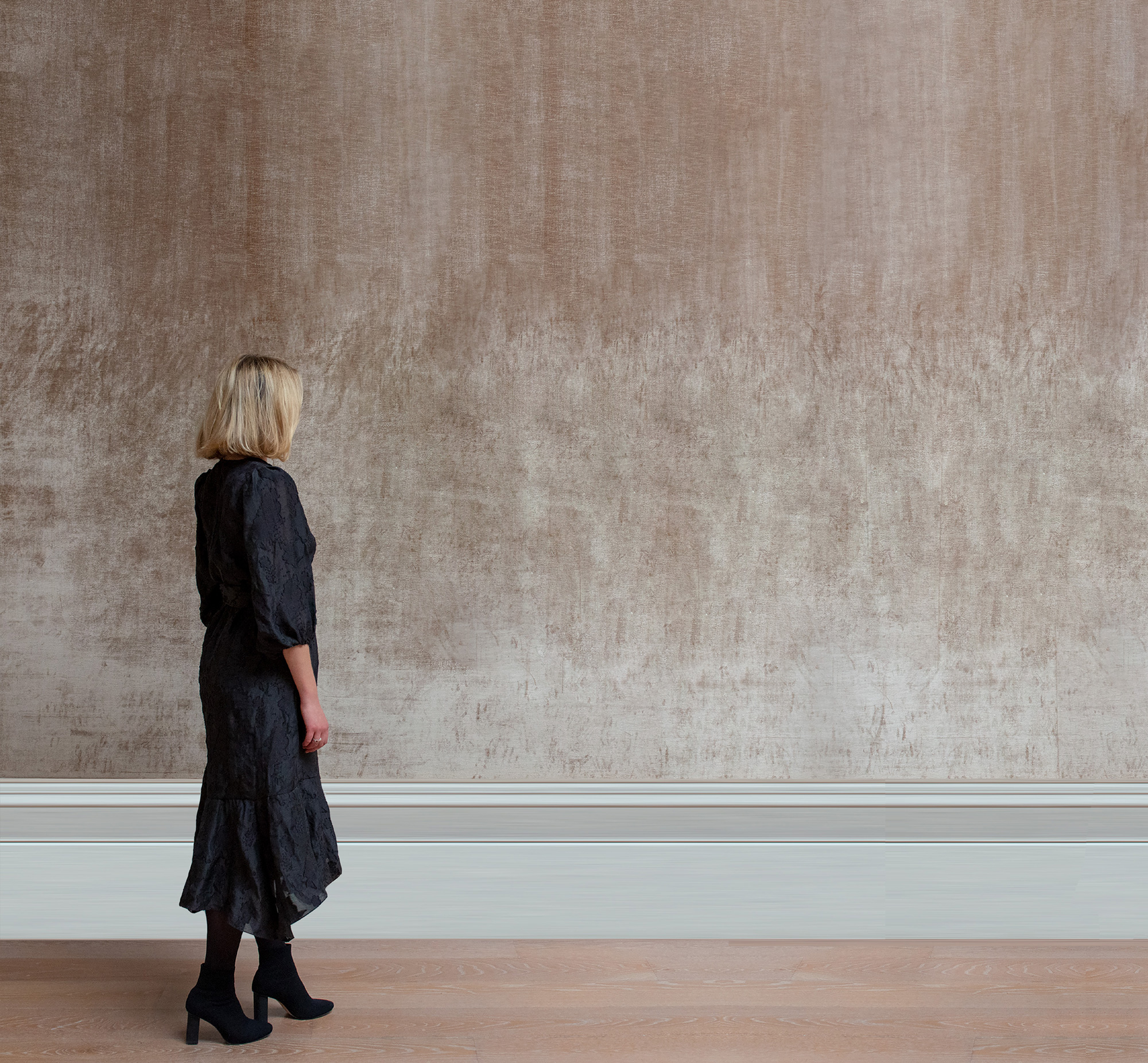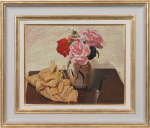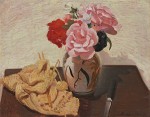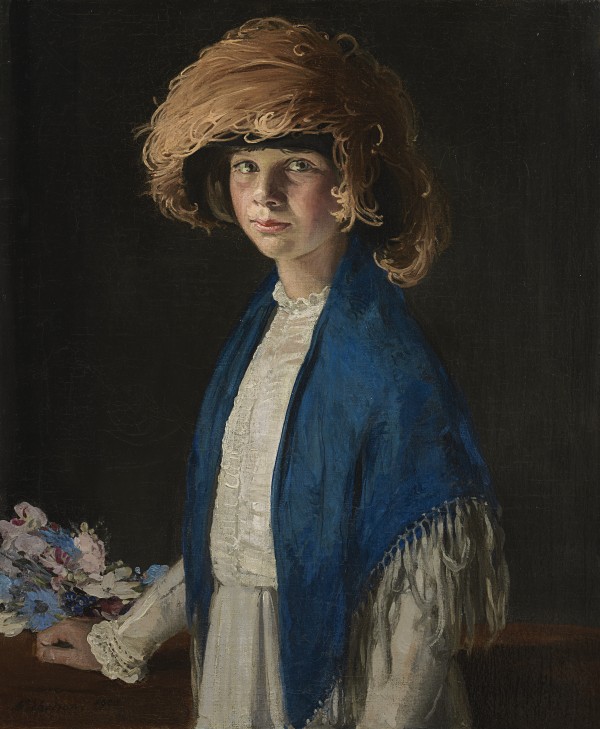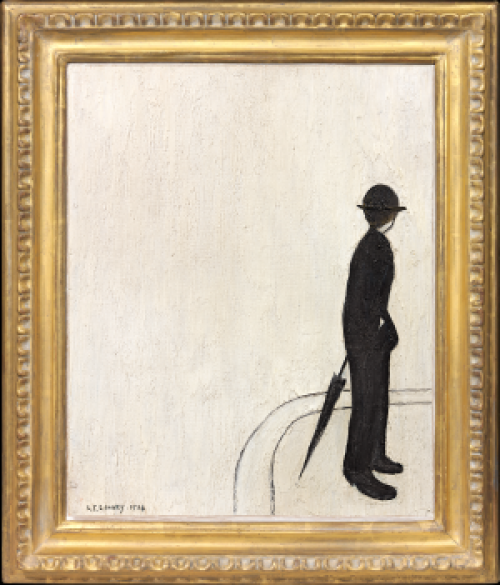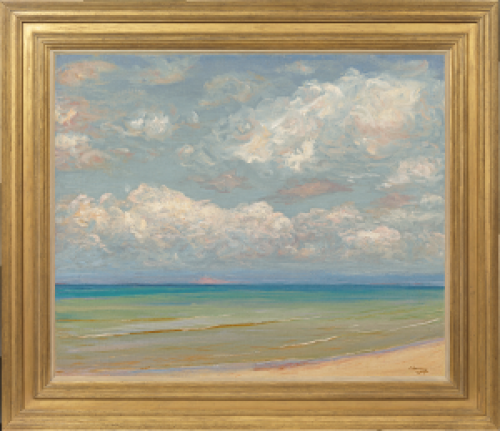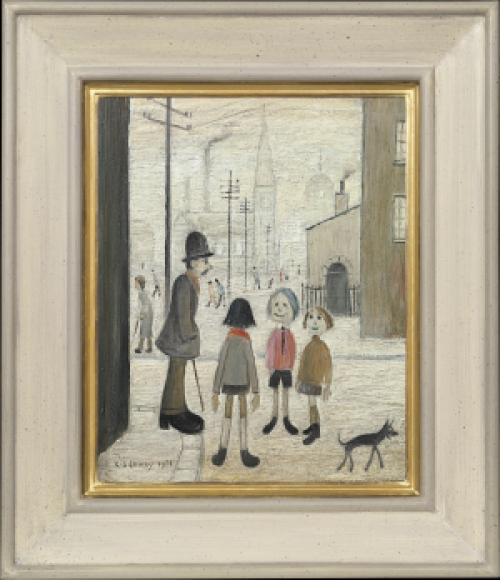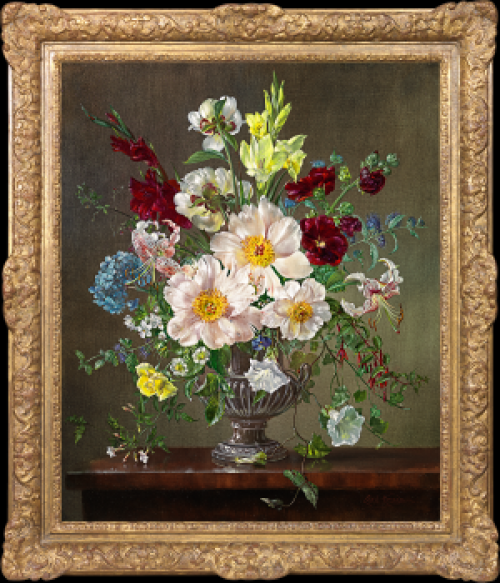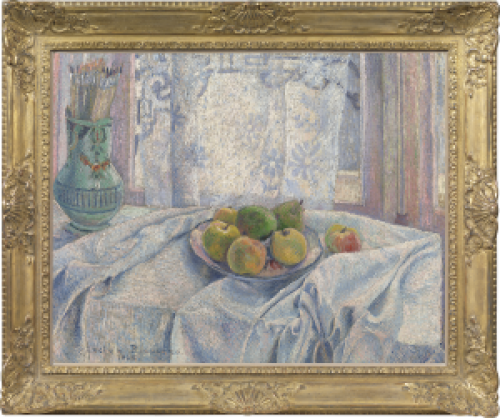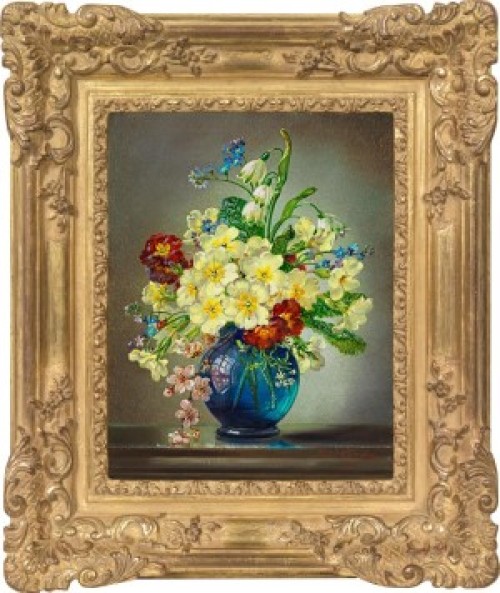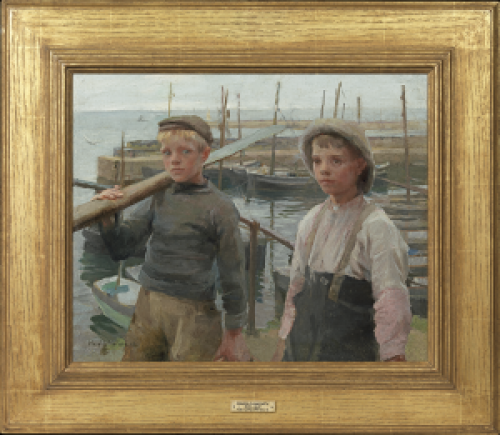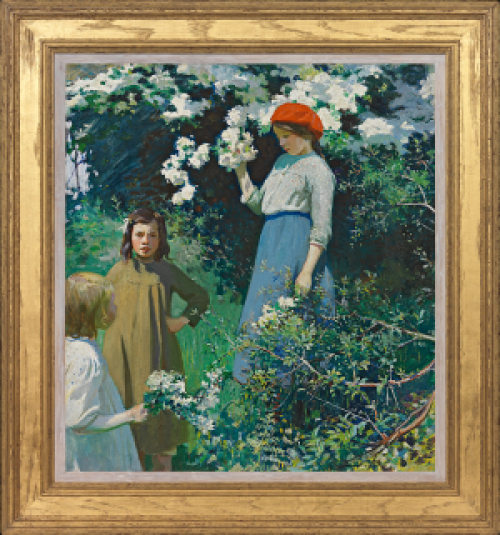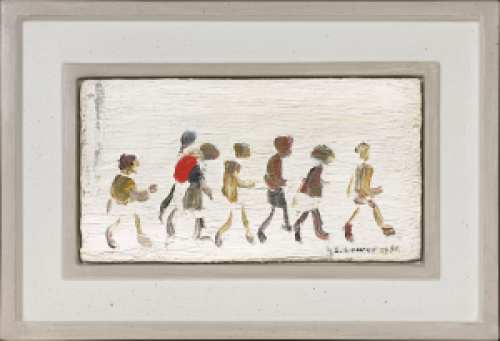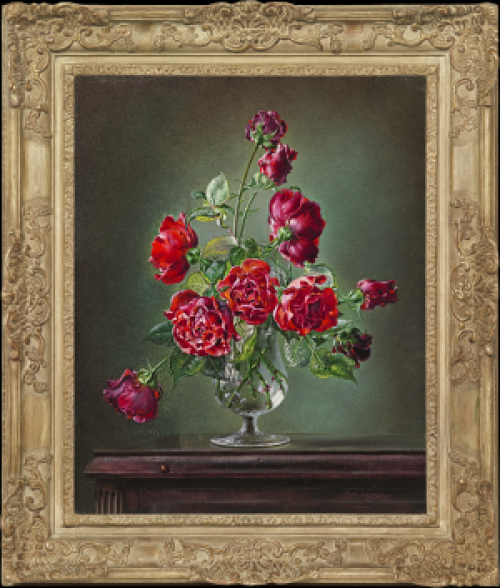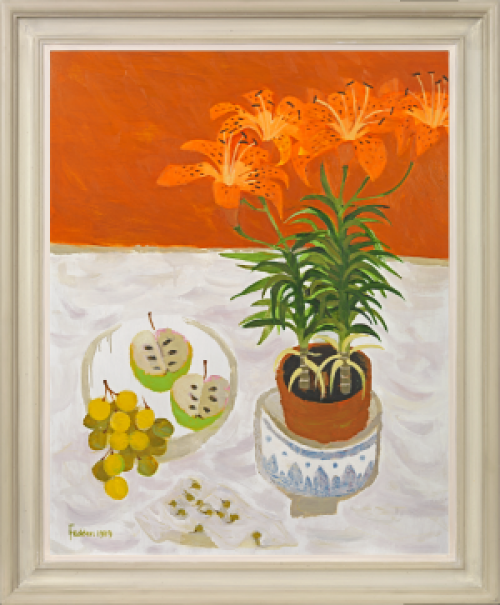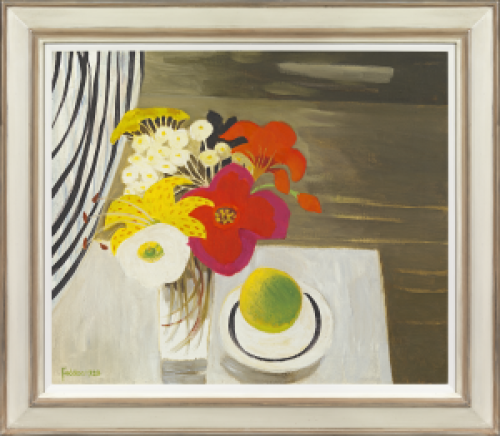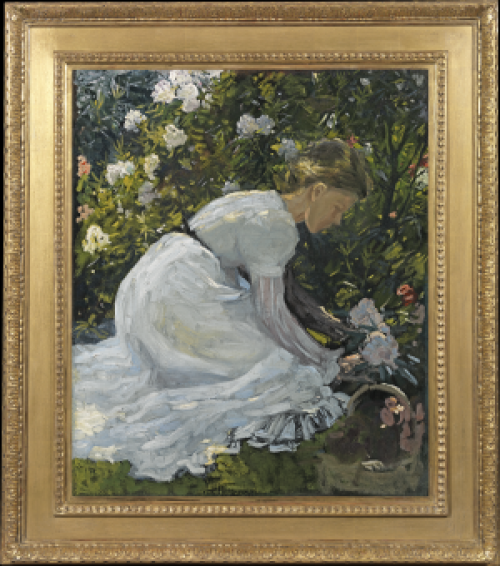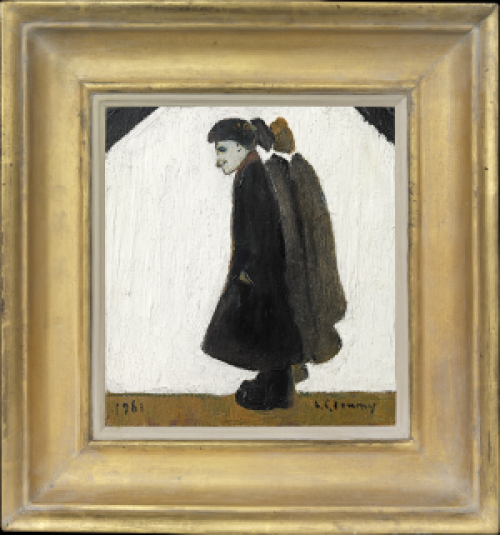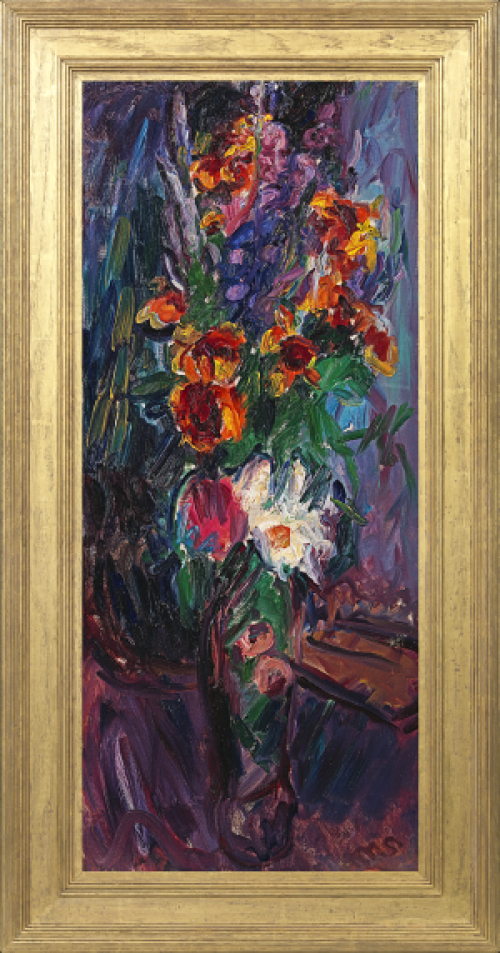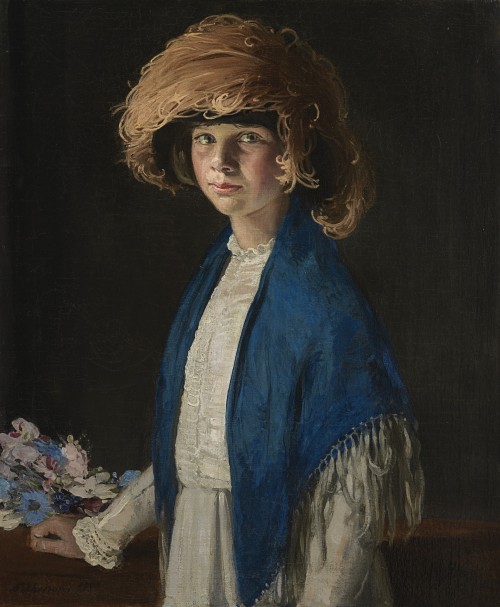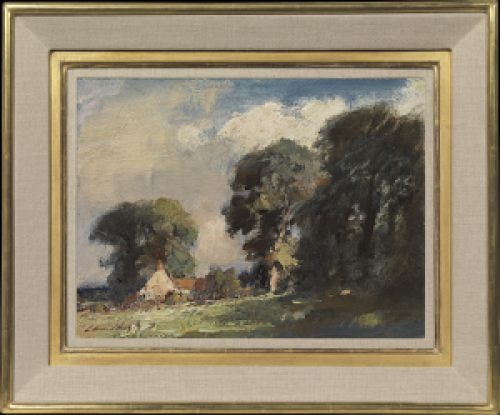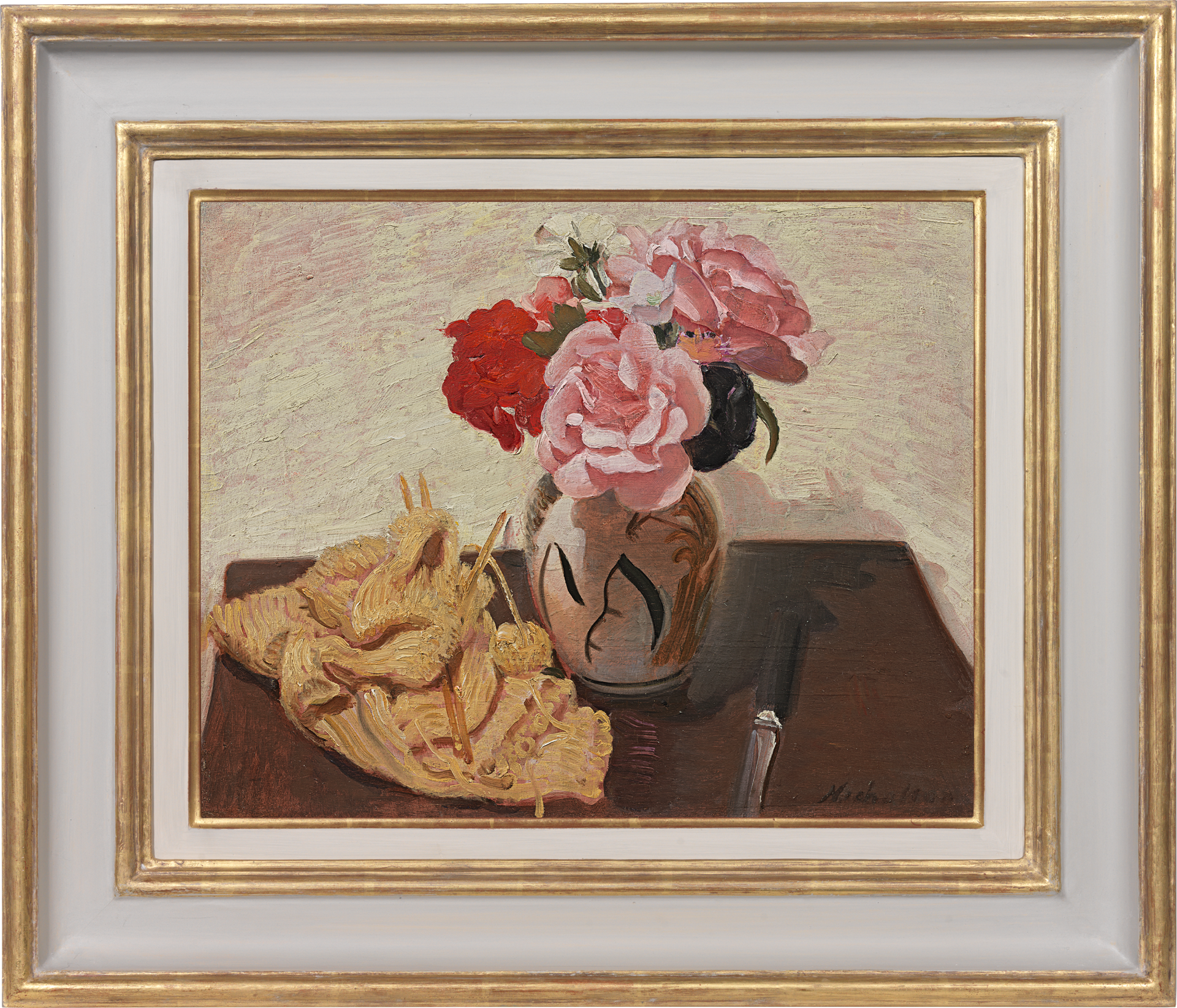SIR WILLIAM NICHOLSON NPS IS
Newark-on-Trent 1872 - 1949 Blewbury, Berkshire
Ref: CD 150
Roses and knitting
Signed lower right: Nicholson
Oil on panel: 13 x 16 in / 33 x 40.6 cm
Frame size: 20 x 23 ½ in / 50.8 x 59.7 cm
In a waxed and coloured hollow frame
Painted circa 1928
Provenance:
Beaux Arts Gallery, London, 1929;
Dame Marie Tempest, acquired from the above, then by descent to her son
Major Norman Loring;
Christie’s London, 28th July 1955, lot 184, as Still life on a table;
Roland, Browse & Delbanco, London;
Sir Malcolm Bullock Bt, 1956, then by descent to his daughter;
Mrs Peter Hastings;
Christie’s London, 1st March 1974, lot 130, as Vase of roses with knife and knitting;
Roland, Browse & Delbanco, London, donated to a charity auction;
Christie’s London, 8th June 1983, lot 40;
Susan Himmelwiet, UK, then by descent
Exhibited:
London, Beaux Arts Gallery, Recent Paintings by William Nicholson, 24th April-31st May 1929, no.16
London, Roland, Browse & Delbanco, Colour pure and atmospheric, October-November 1956, no.28, as Roses with knife and knitting
London, Roland, Browse & Delbanco, Distinguished British Paintings 1875-1950; An accent on Ethel Walker, 9th May-15th June 1974, no.39, as Vase of roses with knife and knitting
Literature:
Lillian Browse, William Nicholson, Rupert Hart-Davis, London 1956, no.58, p.45, as Vase of roses, mistakenly catalogued as oil on canvas board and dated 1908
Patricia Reed, William Nicholson: Catalogue Raisonné of the Oil Paintings, Modern Art Press/Yale University Press, London 2011, no.605, illus. p.480
Over the years William Nicholson included a fascinating variety of objects in his still-lifes: silver lustre bowls, green peapods, gloves, scissors, a pinecone, a parsnip, sealing wax and a variety of textiles – but this is the only time he depicted knitting.
The reason for this may be found in the identity of the first owner, the celebrated comedy actress Marie Tempest (1864-1942) who purchased the work from Nicholson’s solo exhibition at the Beaux Arts Gallery in 1929. The pair had been friends since at least 1903 when Nicholson completed her highly successful portrait (National Portrait Gallery, London) and their friendship continued until her death. Returning to England in her sixties after several years touring abroad, Marie Tempest’s British career had been revived by two plays written especially for her by the young Noel Coward. In his comedy Hay Fever in 1925 she created the role of Judith Bliss, and two years later she starred in The Marquise for which Nicholson designed the costumes. She is shown wearing one of these costumes on the dust jacket of Hector Bolitho’s biography of Marie Tempest (British edition) published in 1936.
When not needed on stage, during performances actors had to endure long periods of inactivity: some played patience, others did embroidery while Marie Tempest was known to enjoy knitting. The needles depicted here may be an early example of plastic which had the advantage of being much quieter to use backstage than ivory, wood or steel needles. They seem to be double pointed, the type that were designed for knitting in the round. Two rows of loops of stitches in the foreground suggest a fourth needle is missing – has some disaster occurred? Perhaps the viewer is being asked to imagine how the work would look when unfolded.
The soft, slightly shimmering, warm folds of wool contrast with the hard glazed surface of the painted vase. It is decorated with scythes and corn stalks – hand painted rather than transfer printed. Two full blown pink roses echo the texture of the knitting; they are combined with white harebells and, perhaps, red geraniums. These are flowers from a mid-summer garden while the vase’s decoration suggests late summer and the harvest.
The appearance of the knife to the right is unexpected. The undisclosed light source coming from upper right places the handle of the knife in deep shadow beside the vase, while the truncated blade is heading in the direction of the viewer. The inclusion of knives or scissors was a device often used by the artist to tilt the picture plane and extend the picture space.
A direct link between Marie Tempest and the knitting has to be speculative but she did own several works by Nicholson and featured in others such as Souvenir de Marie, 1906 (Dublin City Art Gallery). Roses and knitting was among the works by Nicholson that she kept until her death when it passed to her son, Major Norman Loring.
Patricia Reed, author of William Nicholson: Catalogue Raisonné of the Oil Paintings, 2011.

